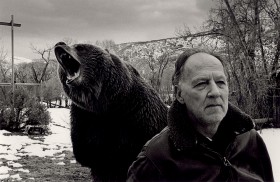


Jorge Pelicano: Suddenly My Thoughts Halt
Svetlana and Zoran Popovic, directors of the Magnificent7 Festival in Belgrade present ”Suddenly My Thoughts Halt” that will be screened February 3rd at the festival. The text also includes words from the director:
Outstanding photography takes us into the space of masked passion and suffering in which we soon discover provocative framework of the cult film “One Flew Over the Cuckoo’s Nest”, while the director delicately developes enchanting atmosphere that evokes famous Mann’s novel “The Magic Mountain”.
The documentary is about a facility for mentally ill in Lisbon. The viewer accompanies the patients in their daily lives and in their preparations for a play. The director of the play lives for this purpose for some time with the patients to build up trust and to simply understand them better. But the core of the film is the people. Pelicano creates with its sensitive camera the necessary space in front of the camera so that the characters unfold naturally. The patients themselves prove that they are amazingly aware about their own situation and not desperate. Instead, they use the opportunity to speak in detail about their crazy truths. These intimate confessions are what fascinates and allows the audience to identify with the events. This is the special power of the film, that the mentally ill are not perceived as a threat but as people who can enrich us and make us laugh even about ourselves.
Guided by magnificent poetry of Ângelo de Lima this film is also a precious insight into the space where lucidity and madness live together.
Director’s Word: Here I return to my desire to film the unknown and try to demystify some myths. As a child I often heard “be good or you go to the Hospital for crazy.” The truth is that no one really knows what one will find inside. And I wanted to demystify some things, to update what is madness. We went there with some fears because, for me, it was all fog. I did not know what was inside that hospital. As time passed the fog disappeared and there were hard things, stronger, that could be represented by a storm. So there is a lot of rain during the film. But there are also moments of sun shining. As we advanced in our work, we gained the trust of our characters and the characters were gaining our trust to the extent that we became close and ended up being friends. This gained confidence was extremely important because that’s what allowed us to look a little bit more into the mind of those people.
Portugal, 2014, 98 mins.
